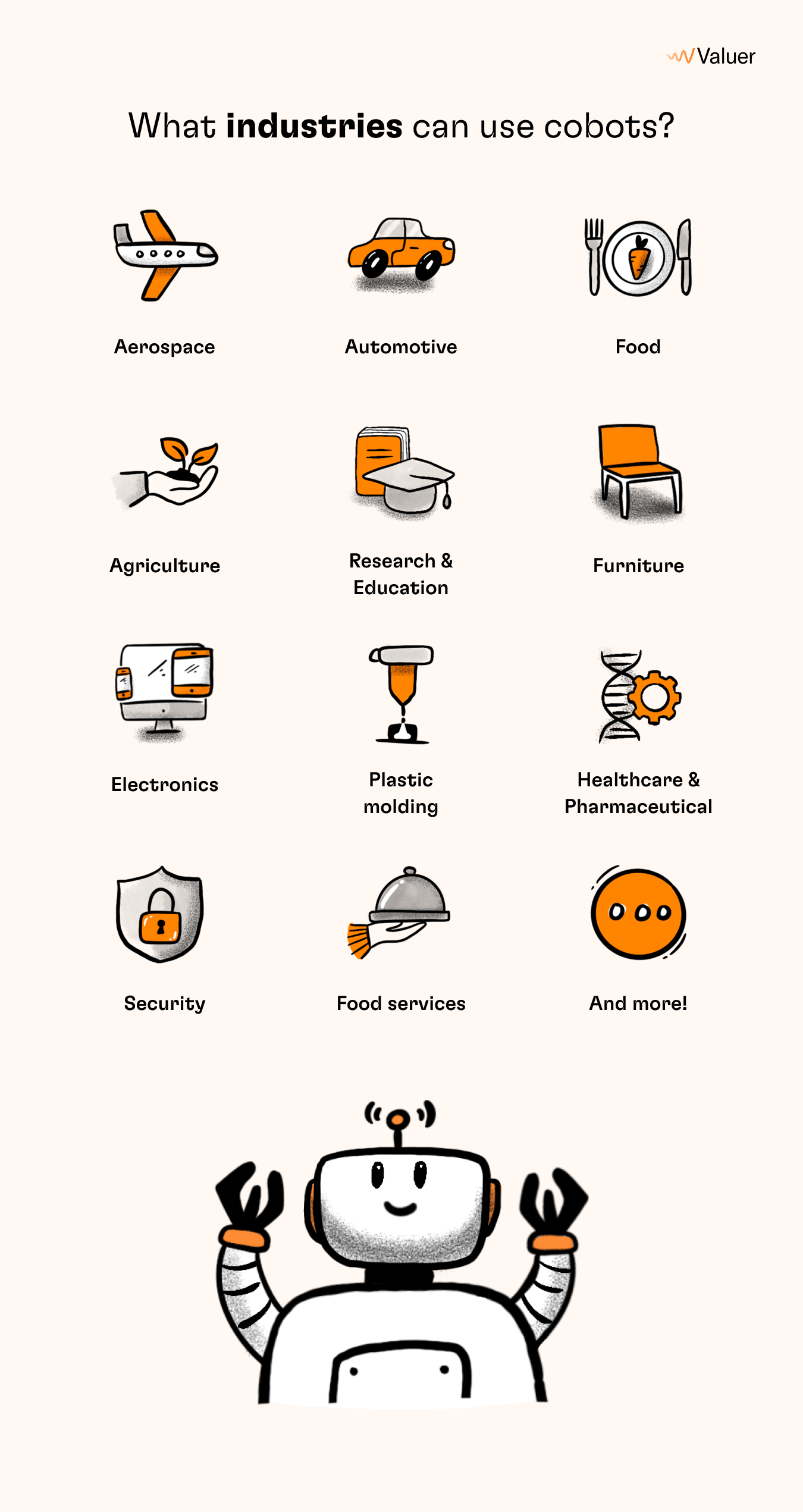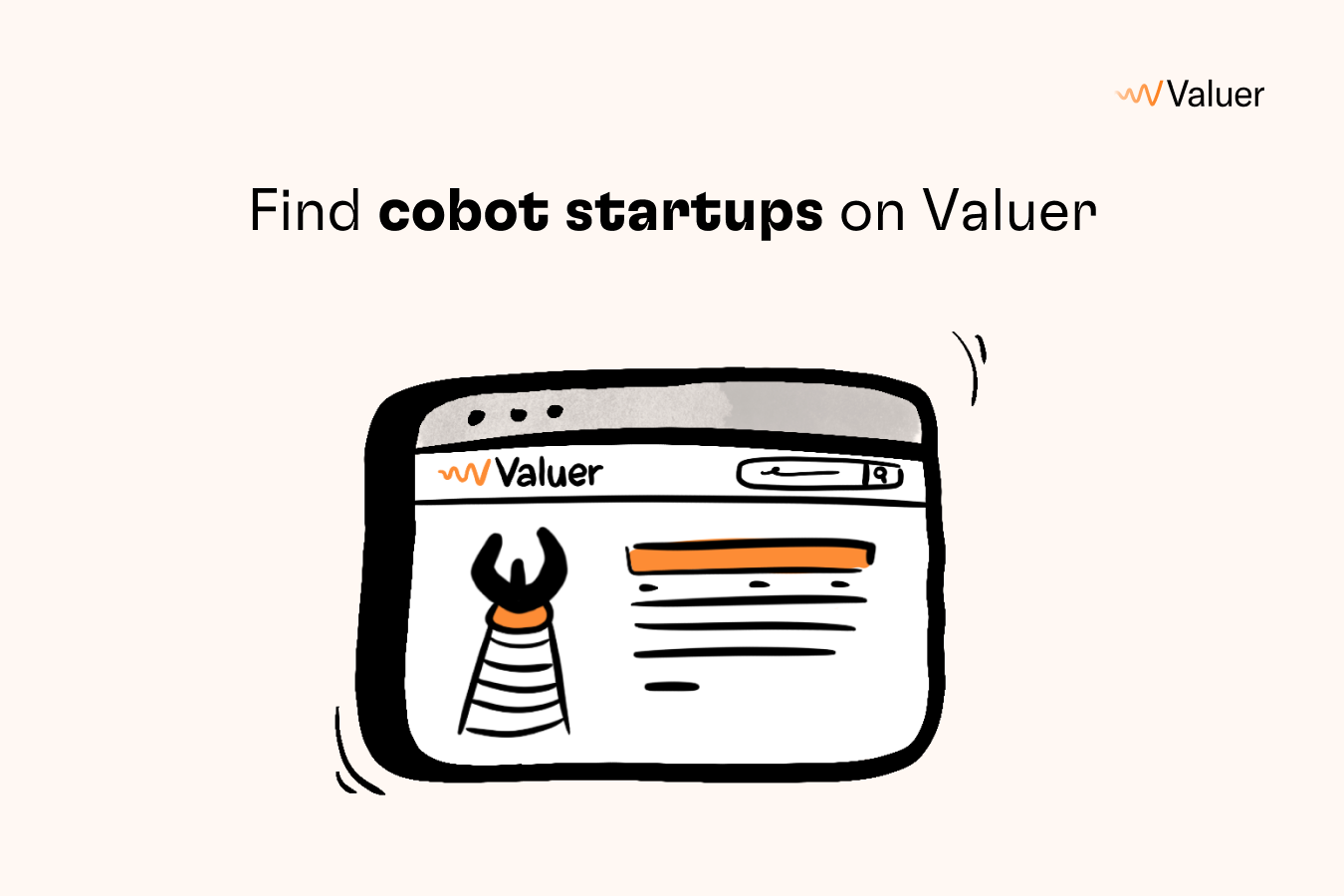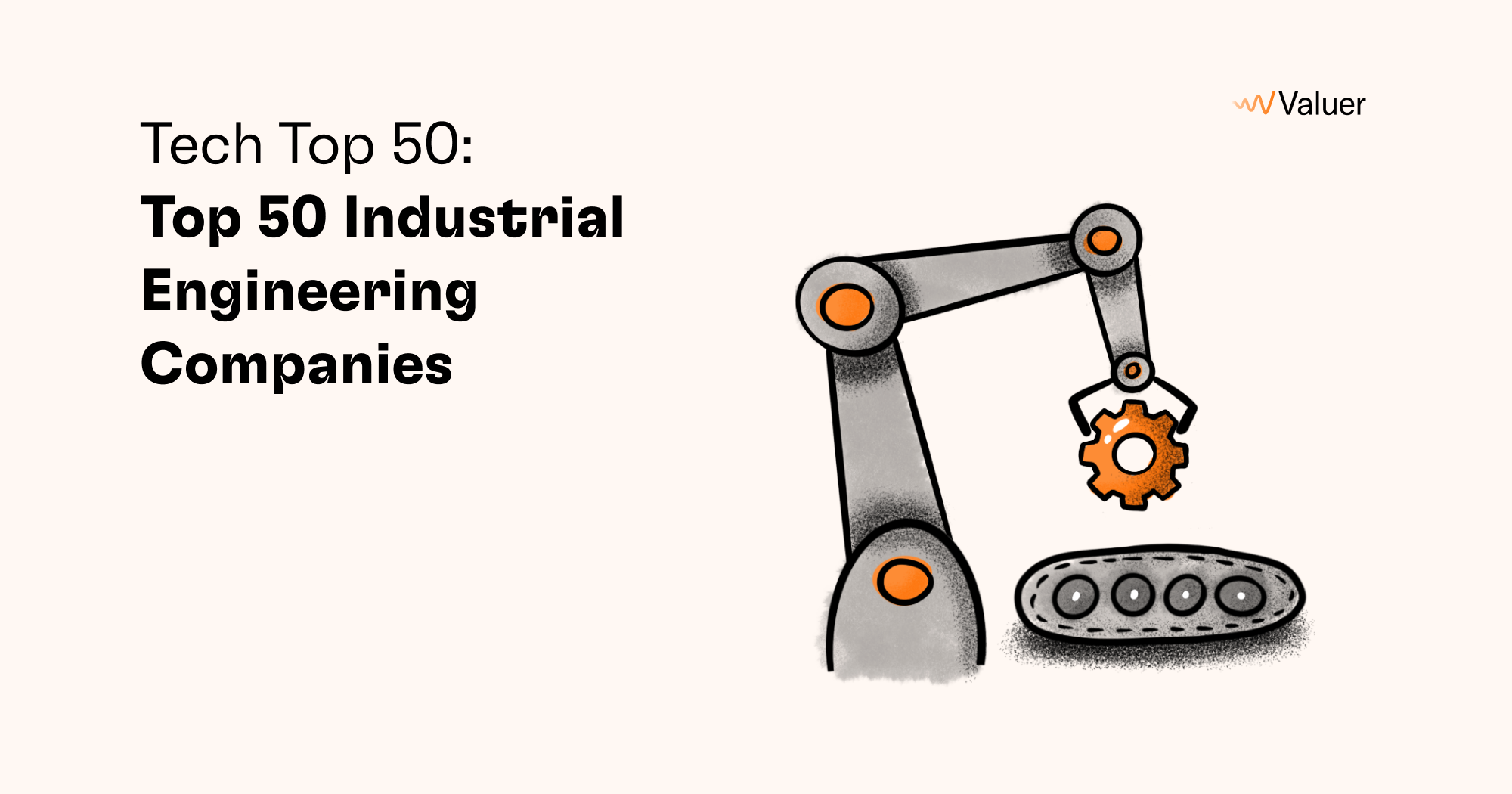Manufacturing is rapidly and very surely transitioning to automation. Automation in industry isn’t just an option or a futuristic possibility only for the most forward-thinking visionaries - it’s becoming a must for businesses looking to maintain a competitive advantage.
 That’s exactly where cobots in manufacturing come in. Collaborative robotics help both big businesses and SMEs grow and automate processes in their factories, warehouses, research facilities, etc. Industrial collaborative robots, in particular, can work alongside human employees and take on tasks that are repetitive, dangerous, and or require precision.
That’s exactly where cobots in manufacturing come in. Collaborative robotics help both big businesses and SMEs grow and automate processes in their factories, warehouses, research facilities, etc. Industrial collaborative robots, in particular, can work alongside human employees and take on tasks that are repetitive, dangerous, and or require precision.
Let’s take an in-depth look at how cobots in manufacturing are a growing trend today and are also sure to be crucial in the future of industry. We’ll go over the details of this technology and how it works, what fields and industries use it, how you can find cobots companies, and finally, where we can expect the tech and market to go. You’ll find that cobots have very few risks and massive benefits as a cost-effective and easy-to-use solution that increases productivity and turnover.
What is a cobot?
So, what is a cobot? Cobot stands for “collaborative robot,” which says it all– cobots are robots designed to work alongside and assist human employees, all the while making sure they don’t cause any harm to us carbon-based lifeforms. Unlike industrial robots, which generally work in isolation and can be dangerous for passers-by, cobots feature sensors and collision avoidance which make them safe to work in the same space as humans.
Collaborative robotics include both robots and robot-like devices and generally are a part of processes that cannot be fully automated, and that’s exactly why we often see them in close quarters with people. Moreover, cobots in manufacturing are assigned tasks that fall into the Four D’s: dangerous, dull, dirty, or dear.
This means that, for better or for worse, cobots are less like C-3PO translating what other machines are saying and giving you a tour of the facility while droning on about safety regulations and more robotic arms that can help with mundane, clean-up-heavy, dangerous, or precision-requiring tasks in factories.
What is the difference between robot and cobot?
When it comes to cobots vs. robots in manufacturing, the difference is in the purpose and, consequently, the type of task that gets assigned to these entities. Industrial collaborative robots are conceptually designed to work alongside humans in order to augment the work of the human employee. They’re not autonomous but rather human-powered and used to help increase efficiency and productivity through more strength, power, precision, and data. They take care of the 4 D’s so we don’t have to.
On the other hand, industrial robots work instead of human employees rather than alongside them, automating mundane tasks that often require a lot of force. For those worried about “robots taking our jobs,” you’ll find the most common phrasing that tries to dispel the fear to be something along the lines of, “robots free up people so they can work on the more fun and creative stuff.”
.png?width=1350&name=Image%201%20(10).png)
So, the key difference is that cobots assist employees and robots replace employees. Beyond that, cobots are easier to program and also learn quickly, thanks to the AI. To give you a very basic example, if you move a collaborative robot arm to show them how to complete a task there, it will “learn” the new movement and continue repeating it. Industrial robots require complex reprogramming that requires a skilled engineer or developer.
Lastly, as cobots are small and designed for coworking, they aren’t usually assigned to heavy-duty manufacturing - that’s the work of industrial robots. For instance, an industrial robot may work on assembly in the automotive industry, though cobots could work with smaller parts as well. Industrial robots are sometimes caged due to their size and strength to protect employees from accidents. On the other hand, an industrial collaborative robot could work on something, like precision welding or quality control in the same plant.
Advantages of cobots in manufacturing
Collaborative robots can help businesses scale up and automate various parts of production, which additionally frees up more space for remote work. The bottom line is that cobots in manufacturing can improve quality control, optimize efficiency, and increase production.
Furthermore, the AI allows for flexible and versatile use of these machines, so they can always find a “job” on site. They also boost safety for employees by taking over tasks that are less than desirable. Overall, cobots are ideal for SMEs (small and medium-sized enterprises) as they can augment human work and are quite cost-efficient.
Disadvantages of cobots in manufacturing
The main disadvantages of cobots in manufacturing have nothing to do with their functionality but rather about the question of whether they’re the right choice for a certain business. For instance, as we’ve already covered, cobots aren’t made for heavy-duty manufacturing, and they can’t handle the heavy lifting. Furthermore, they’re not fully automated. But these are also their strengths when it comes to factory floors where human employees need an extra hand.
More significantly, though, collaborative robots still have some limitations when it comes to cognitive tasks and finesse tasks. However, as the technology continues to develop, cobots will likely overcome these shortcomings - or rather, their engineers and developers will.
Tasks of collaborative robots in manufacturing
If cobots can’t do the heavy lifting, what do they do? Some common tasks that we can assign to cobots in manufacturing include:
- Picking and placing
- Bin picking
- Palletizing
- Packaging
- Machine tending and monitoring
- Quality control and testing
- Screwing, gluing, sealing
- Welding, soldering, and other process tasks
- Sanding, polishing, deburring, grinding
This versatility is why cobots find employment in a broad array of industries and fields, including manufacturing in electronics, aerospace, automotive, furniture, plastic modeling, etc. They also work in healthcare and pharmaceutical (precision tasks, repetitive tasks), labs and research, security (monitoring), food services and food production (quality control), agriculture (picking and placing), and so on.

Collaborative robotics today
Cobots aren’t a thing of the future - they’re here today. Case studies have already revealed the successful use of collaborative robotics in various industries over the past few years. For instance within:
- Metal and machining– machine tending, quality inspection, material handling and removal
- Scientific research– quality control
- Automotive– in material handling and machine tending
- Furniture–material handling and assembly
- Healthcare– quality control
These industry examples are also not the only applicable uses of collaborative robotics but are some of the most common currently.
The results are overwhelmingly positive, as they increase ROI and productivity, cut time spent on tasks, reduce the margin for error, create more flexibility, and eventually, generate better turnover and more cost-efficient production.
In 2020, the cobot market was valued at $981 million, and it’s expected to go up to an astonishing $7.172 billion by 2027. This is because the track for cobots in manufacturing has been pretty consistent in showing favorable results and benefits across industries, and SMEs are a significant market driver.
As more businesses take the plunge as a part of their transition towards automated manufacturing, the forecasted growth of the cobot market doesn’t come as a surprise. Cobots aren’t a technology in its earliest stages, only for the daring - the risk assessment results are in, and it’s an investment that pays out both short and long term.
Find cobots companies with Valuer
R&D teams have to go through a lot of resource-intensive research to find the right cobots companies to partner up with once they’re ready to utilize the potential of this technology. Let us use our resources to show you how to discover cobots companies and the types of cobots companies that you can find on our platform.
For starters, you can go to our "Explore Technologies" feature and select cobots from the list. Each “discover technologies” page allows you to either request a tech deep dive as well as view companies using this technology. The deep dive report, prepared by our research team, provides you with detailed information regarding a specific technology - in this case, cobots - such as application, benefits, maturity, etc.

In the meantime, let’s see what cobots companies we discovered when we clicked on “companies using this technology.”
Cobot companies:
Locus Robotics
A US cobots company founded in 2014 that builds autonomous mobile robots that can work with human coworkers in the fulfillment and logistics, retail, and healthcare industries. They have a robotic fleet (the locus origin, locus vector, and locus max) and orchestration platform for warehouses that help to streamline fulfillment and putaway. Their robotic solutions span a wide range of needs, including directed picking, putaway, P2P transport, and robotics as a service, among others. What's more, the company's locus fleet is designed to fit easily and seamlessly into any WMS system.
Covariant
Covariant is a younger US cobots company from 2017 that designs AI-powered cobots for accurate picking and placing in industries such as retail, e-commerce, apparel, manufacturing, parcel shipment, etc. Covariant robots learn general abilities, such as robust 3D perception, physical affordances of objects, few-shot learning, and real-time motion planning. This allows them to adapt to new tasks.
Audaptic
Founded in Sweden in 2016, Audaptic creates software for cobots fleets in warehouses with the aim of automating and coordinating warehouse operations. Of course, these cobots are safe for work alongside human employees.
The future of cobots in manufacturing
The cobot market is expected to reach $8 billion by 2030, but what does that mean about the technology? Cobots are quickly becoming a significant part of automation in manufacturing as the technology is proving to be reliable, which means that more and more companies are ready to use it.
Cobots will grow more sophisticated and versatile in the upcoming years. As the AI becomes better, so will the fulfillment of precision and cognitive tasks undertaken by cobots. Moreover, the connectivity of cobots with IIoT, meaning the connection to other machines, devices, network databases, etc., will allow them to improve multiple factory workflows and even to provide valuable data analytics, including predictive analytics and suggestions on how to improve processes.

The ongoing fourth industrial revolution makes the race fiercer and faster, and the use of cobots in manufacturing can give businesses a true competitive advantage. Collaborative robots can augment the work of human employees and allow them to focus on more interesting and less dangerous tasks. At the same time, cobots help to facilitate scalability and increase productivity, efficiency, and output.
.png?width=103&height=103&name=Untitled_Artwork%20725%20(2).png)









